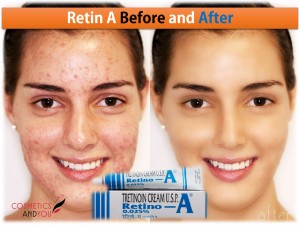Long Island, New York Oct 26, 2022 (Issuewire.com) - Dr. Glenn Messina a physician practicing Aesthetic Medicine in Commack Long Island reviews the differences between two very popular anti-aging treatments Retin-A and Retinol and presents four things you can do in order to obtain the best results from either product.
The History of Retinoids
Retinoids are all vitamin A derivatives; the first was Retin-A or Tretinoin and developed in the 1970s as a topical solution for treating Acne. However, in a short time, this compound was noted to possess remarkable rejuvenating powers. Some of these included erasing the evidence of sun damage by clearing solar lentigines or sun spots, reducing fine lines and wrinkles, improving texture, and even preventing the formation of pre-malignant lesions. Therefore, Retin-A has become the cornerstone of many rejuvenation programs a well-deserved honor.
Retinoids Stimulate the Skin in Many Ways
Let's discuss Retin-A first. This product is prescription only and comes in 3 strengths .025%, .05%, and .1% plus is carried in either a gel ( excellent for oily skin types) or a cream ( excellent for dry skin or those in arid climates ).
The major obstacle is the prescription requirement.
Retin-A should only be applied at night after you cleanse the skin and moisturize. It's important to use it at night because sunlight neutralizes the product reducing its activity to nil.
In a short time, cellular turnover is increased collagen is stimulated, and elastin is produced all of which create soft, youthful facial skin. The increased cellular turnover causes the surface cells to fall off earlier, and in turn reduces the time the outer layers of epidermal skin is exposed to the sun, its harmful rays, and other toxins in the atmosphere. This reduces the visible signs of, sun damage notably sun spots, brown dyschromia, fine lines and wrinkles. It is also the production and strengthening of collagen which reduces fine lines and wrinkles even further. Meanwhile, swelling in the dermis adds to facial fullness and healthy appearing skin.
What are the side effects of Retin-A?
The most common side effect is dryness, flaking and irritation of the facial skin. Mostly due a sudden increase in cellular turnover. This can be irritation even painful and a common cause for patients to stop taking the product. However, if yo hold the course in ,3 weeks or less your skin becomes accustomed to the product and this irritation resolves explains Dr. Messina.
There is also a condition claaed purging, again due to cellular turnover. Purging includse a sudden outbreak of new Acne in the regions of the old. Although very concerning to the patient they are comforted to hear that all purging ceases in 6 weeks
It's very important to use a gentle cleanser and moisturizer during a purge.
The Most Notable Improvements in Your Facial skin Are:
A smoother softer feeling skin
A reduction of fine lines and wrinkles
Loss of solar lentigines or sun spots, brown discoloration, and removal of the yellowing of sun-aged skin.
Resolution or reduction in hyperpigmentation.
Improved wound healing.
However, the most important outcome according to Dr. Messina, prevention of pre-malignant lesions and even the destruction of pre-malignant lesions that have already formed before starting a Retin-A program.
Retin-A Causes Signiicant irritation of the skin. What can I do?
The irritation stems from the cell activity and is self-limited. In general, after two to three weeks the irritation subsides. However, if you can't tolerate this, you can either go to a lower strength or apply every other day and work up to a nightly routine. Of course, a quality moisturizer applied before adding Retin-A and once again after will reduce the problem of irritation as well.
Of interest, it has been demonstrated that if used strictly for rejuvenation the lowest strength .025% offers identical results to the higher strength .1%. Therefore you can avoid and reduce inflammation but using a more conservative dose.
What Is Purging?
Purging occurs when treating acne; the sudden increase in cellular turnover causes another outbreak in the same region. While this is unsettling to the affected individual, it is self-limited and resolves in 6 weeks or less.
Nightly Application Is a Must!
Although second and third generations of Retinoids are sun stable, Retin-A is not and therefore is destroyed by ultraviolet light. It's also a great idea to wear large brim hats, sunglasses, and scarves to reduce excess UV exposure on the facial skin.
Can I use Retin-A Long Term?
There are no studies that demonstrate that long-term usage of Retin-A has harmful effects, however, there are instances where it must be stopped. The first is during pregnancy; the second is while breastfeeding. It is also important to stop using Retin-A for 2 to 3 weeks before starting any laser procedure or chemical peel. Retin-A will make you significantly more sensitive.
What About Retinol?
Retinol is a nonprescription retinoid however since it is not an FDA-regulated substance it is really more of a cosmetic. Retinol is frequently found in most cosmetics, making obtaining the product easier than Retin-A. Unfortunately, this is a double edge sword. The lack of oversight means the quality and concentration of Retinol in each product swings widely and it has been noted that in some inferior products the quantity of Retinol is too low or poor to offer any benefit.
Retinol must be converted to its active form Retinoic Acid. this occurs in a two-step process inside the epidermis of your skin, and only about 5% is actually converted to active Retinoic Acid.
This means the strength, and thus the benefits of Retinol are significantly lower than with Retin-A.
WHAT IS THE BENEFIT OF USING RETINOL?
According to Dr. Messinsa Retinol has its place in rejuvenation it is readily available so for persons unwilling or unable to obtain a physician's prescription it is a means of participation, and second it is not associated with the significant irritation that occurs while using Retin-A.
Retinol will reduce fine lines and wrinkles, remove some sun damage and improve the texture and quality of the skin but the results will take longer, 12 months vs 3 to 6 months and the results are not as profound.
Of note, however, retinol has not been proven to prevent the formation of pre-malignant lesions.
Dr. Messina's 4 Tips !
1. Apply sparingly to the face. A pea-size dose is all that is required.
2. Always apply at night after cleansing and adding moisturizer, allowing both to dry and avoid the eye.
3. Make a Retin-A sandwich, moisturizer: Retin-A: Moisturizer. this makes for well-hydrated skin!
4. Patience, while you may see results in a few weeks the best results are seen after 3 months. If you are looking for wrinkle reduction, it will require more time. It is important to understand these products can not replace a facial surgery, deep folds and wrinkles will only be modestly improved using Retinoids
Media Contact
glenn messina *****@yahoo.com 1-631-675-1842 283 Commack Rd Suite 320 Commack NY 11725 https://messinaesthetics.com









